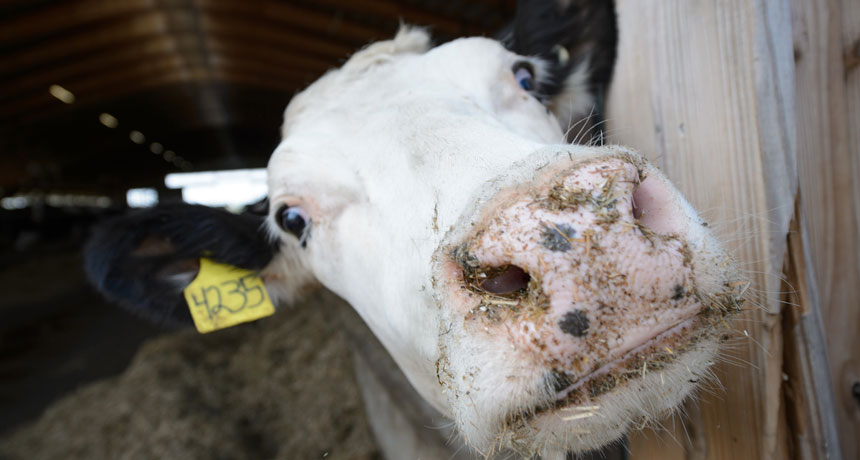Questions for ‘Cool Jobs: Crazy about cows’

Cows provide milk, meat and other foods — plus lots of opportunities for exciting work in science and engineering.
G.L. Kohuth, Michigan State University
Share this:
- Share via email (Opens in new window) Email
- Click to share on Facebook (Opens in new window) Facebook
- Click to share on X (Opens in new window) X
- Click to share on Pinterest (Opens in new window) Pinterest
- Click to share on Reddit (Opens in new window) Reddit
- Share to Google Classroom (Opens in new window) Google Classroom
- Click to print (Opens in new window) Print
To accompany feature “Cool Jobs: Crazy about Cows”
SCIENCE
Before Reading
1. Most people buy their milk and meat from a supermarket. Describe the steps it took to get those goods from the farm to the store.
2. Until the 1850s, most people had their own cows. Today, most cattle are raised on large farms and ranches. Why did this happen? What might be the advantages and disadvantages of such a change?
During Reading
1. According to the story, why do cattle present an environmental challenge?
2. Why are sick cattle difficult to detect?
3. Why is it useful for a farmer or rancher to be able to find a cow or steer quickly after it becomes sick?
4. Describe three uses for an ear tag that is attached to a cow or a steer.
5. What is total mixed ration?
6. How do cow burps contribute to climate change?
7. What is biogas?
8. Based on the story, why does Dana Kirk call his anaerobic digester “an extension of the cow’s stomach?”
9. What nutrients are in manure that would make it an appealing fertilizer for farmers? How would removing water from manure cut down on how much it costs to move this fertilizer?
After Reading
1. Some scientists recommend that to limit climate change, people should eat less meat. Based on what you have read in this story, do you think that’s a good idea?
2. How much does cattle production contribute to global warming? How does it compare to other sources? Rank what you think would be the three easiest ways for people to cut greenhouse gases. Explain your rankings.
3. When cattle are sick, their behavior can change. Dairy farmers can use ear tags to monitor that behavior and tell when they are sick. How else might farmers detect those changes in behavior? Research how dairy cattle are raised and, with a partner, brainstorm two other ways that farmers might identify sick cows.
MATHEMATICS
1. Using data from the story, calculate how much manure is produced by the 9.3 million dairy cows found on U.S. farms daily. How much is produced in a year? Show your calculations.
2. There are more than 264 million dairy cows globally. Together they produce nearly 600 million metric tons of milk every year. How much milk is that per cow, on average? If U.S. cows produce milk at the same rate, and there are 9.3 million dairy cows, much many metric tons of milk would they produce each year? Show your calculations.
3. Based on recent figures, U.S. butchers slaughter about 35.5 million cattle for meat each year. On average, butchers get about 490 pounds of meat from each steer. If there are are currently 322 million people living in the United States, how much beef does that allow for each man, woman and child in America each year? Show your calculations.